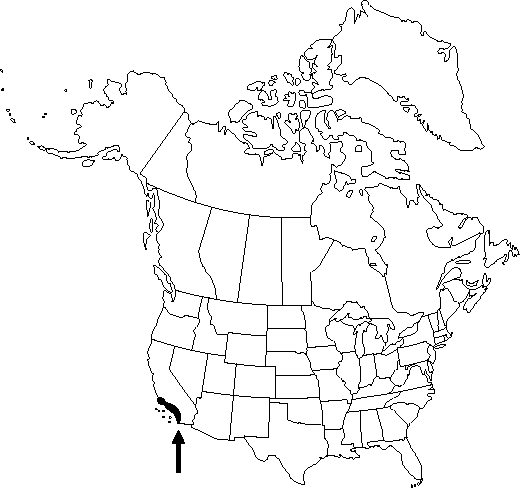Difference between revisions of "Delphinium patens subsp. hepaticoideum"
Univ. Colorado Stud., Ser. D, Phys. Sci. 2: 103. 1945.
FNA>Volume Importer |
imported>Volume Importer |
||
| (6 intermediate revisions by 2 users not shown) | |||
| Line 27: | Line 27: | ||
|elevation=300-1300 m | |elevation=300-1300 m | ||
|distribution=Calif. | |distribution=Calif. | ||
| − | |discussion=<p>Although Delphinium patens has not been reported outside California, subspp. hepaticoideum and/or montanum may grow in mountains of northern Baja California, Mexico.</p><!-- | + | |discussion=<p>Although <i>Delphinium patens</i> has not been reported outside California, subspp. hepaticoideum and/or montanum may grow in mountains of northern Baja California, Mexico.</p><!-- |
| − | --><p>Although it hybridizes with Delphinium parryi and D. umbraculorum, D. patens subsp. hepaticoideum usually flowers early enough not to overlap in any given site with flowering time of those species.</p><!-- | + | --><p>Although it hybridizes with <i>Delphinium parryi</i> and <i>D. umbraculorum</i>, <i>D. patens </i>subsp.<i> hepaticoideum</i> usually flowers early enough not to overlap in any given site with flowering time of those species.</p><!-- |
| − | --><p>Likely to be confused only with Delphinium umbraculorum, D. patens subsp. hepaticoideum may be distinguished from that species by its ringed, unwinged seeds, recurved fruits, and lack of arched hairs. Contrasting features of D. umbraculorum are presence of unringed, winged seeds, erect fruits, and arched hairs.</p> | + | --><p>Likely to be confused only with <i>Delphinium umbraculorum</i>, <i>D. patens </i>subsp.<i> hepaticoideum</i> may be distinguished from that species by its ringed, unwinged seeds, recurved fruits, and lack of arched hairs. Contrasting features of <i>D. umbraculorum</i> are presence of unringed, winged seeds, erect fruits, and arched hairs.</p> |
|tables= | |tables= | ||
|references= | |references= | ||
| Line 38: | Line 38: | ||
-->{{#Taxon: | -->{{#Taxon: | ||
name=Delphinium patens subsp. hepaticoideum | name=Delphinium patens subsp. hepaticoideum | ||
| − | |||
|authority=Ewan | |authority=Ewan | ||
|rank=subspecies | |rank=subspecies | ||
| Line 53: | Line 52: | ||
|publication year=1945 | |publication year=1945 | ||
|special status=Endemic | |special status=Endemic | ||
| − | |source xml=https:// | + | |source xml=https://bitbucket.org/aafc-mbb/fna-data-curation/src/2e0870ddd59836b60bcf96646a41e87ea5a5943a/coarse_grained_fna_xml/V3/V3_324.xml |
|genus=Delphinium | |genus=Delphinium | ||
|section=Delphinium sect. Diedropetala | |section=Delphinium sect. Diedropetala | ||
Latest revision as of 21:47, 5 November 2020
Leaves: basal leaves usually present at anthesis; basal and proximal cauline leaves rarely cleft more than 4/5 radius of blade. Leaf blade: ultimate lobes 3-5, width more than 15 mm. Inflorescences: pedicel usually glabrous. Flowers: lateral sepals 11-17 mm, spur 10-18 mm; lower petal blades 5-8 mm; hairs symmetrically distributed. 2n = 16.
Phenology: Flowering spring.
Habitat: Wooded ravines, near streams
Elevation: 300-1300 m
Discussion
Although Delphinium patens has not been reported outside California, subspp. hepaticoideum and/or montanum may grow in mountains of northern Baja California, Mexico.
Although it hybridizes with Delphinium parryi and D. umbraculorum, D. patens subsp. hepaticoideum usually flowers early enough not to overlap in any given site with flowering time of those species.
Likely to be confused only with Delphinium umbraculorum, D. patens subsp. hepaticoideum may be distinguished from that species by its ringed, unwinged seeds, recurved fruits, and lack of arched hairs. Contrasting features of D. umbraculorum are presence of unringed, winged seeds, erect fruits, and arched hairs.
Selected References
None.
